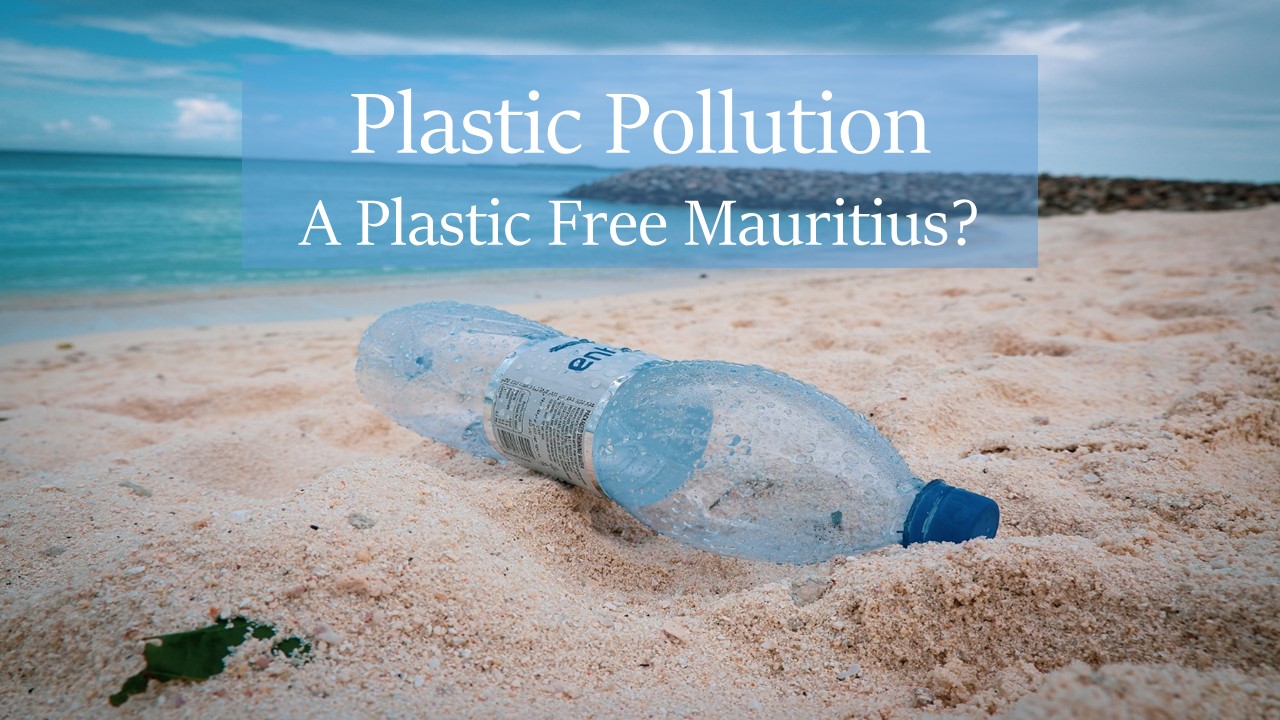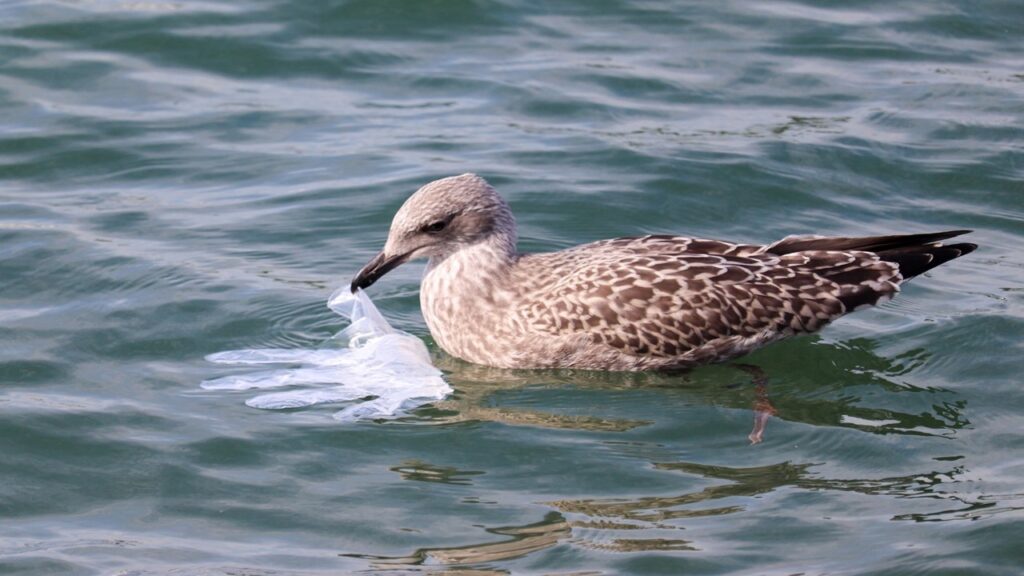Strategies to Effectively Tackle Plastic Pollution in Mauritius

Plastic pollution is now an alarming issue threatening ecosystems all around the world. Chocolate wrappers, straws and bottles have been reported in diverse habitats from the poles to submarine canyons. With more than 300 million tons of plastics produced each year, at least 8 million tons make their way into the oceans.
Consequently, governing bodies worldwide are making substantial efforts to tackle plastic pollution. In line with this, the Republic of Mauritius set in place a number of strategies to curb plastic pollution, thus making the island cleaner and greener.
Waste stream in Mauritius
A population of 1.3 million people currently living in Mauritius generate around 1488 tons of waste daily. Domestic wastes consist mainly of organic waste (54%), paper (14%), plastics (14%), textile wastes (6%), metals (3%), glass (3%) and others (6%). Trucks load the waste, compress them at transfer stations and ultimately dump them at the only landfill of the island, Mare Chicose.
Plastic waste
Plastic wastes account for over 75,000 tons of the waste stream per year or 14% of the total waste generated. They are mainly in the form of packaging, bags, plastic bottles and food containers. More specifically, plastic waste contains
- 29.11% LDPE (Low Density Polyethylene)
- 26.78% HDPE (High Density Polyethylene)
- 16.74% PET (Polyethylene terephthalate)
- 5.47% PP (Polypropylene)
- 0.20% PVC (Polyvinyl Chloride)
- 0.20% ABS (Acrylonitrile Butadiene Styrene)
- 0.13% LLDPE (Linear Low Density Polyethylene)
- 20.67% Other
The amount of plastic waste produced in Mauritius is quite significant. For example, the beverage industry alone commercializes 128 million PET bottles every year. But only some 2000 to 3000 tons of plastic are recycled annually both locally and through export. As a result, most of the plastic wastes end up at Mare Chicose landfill, illegally dumped in wild and abandoned land, rivers and the ocean.
Impacts on plastic pollution in Mauritius
Yet, plastic pollution causes a lot of harm to the island and its inhabitants.
1. Affects tourism
As Mauritius is basically a world-famous touristic destination, plastic pollution heavily affects the natural environment. Plastic debris washes up on beaches, the wind carries them into nature reserves and they get entangled in the roots of mangroves. Consequently, it makes these sites unsightly leading to additional costs for clean-ups.
2. Plastic debris kill terrestrial and marine animals
What’s more, animals like deer and birds smell food in plastic containers and approach plastic debris out of curiosity. The same goes for marine organisms like sea turtles. They can choke to death when they eat plastic debris or accumulate toxic materials in their bodies over time. Or they can also get entangled, hurt and die in plastic debris trying to be loose.

3. Accumulates in human bodies
Over time, macro-plastics like chocolate wrappers break down into smaller particles called micro-plastics. While it is more difficult to notice micro-plastics, they are far more dangerous. They enter human bodies through food chains, for example from earthworms to chicken to us.
So, over time, they accumulate in human bodies leading to health problems. To be sure, micro-plastics have been discovered in tap water, table salt and bottled water in Mauritius.
4. Causes the proliferation of mosquitoes
Additionally, plastic containers like cups and containers fill with water after rainfall or when they get carried in water bodies. Mosquitoes then proliferate becoming a nuisance to local communities. At the same time, they spread diseases like dengue and chikungunya like has happened in the past in Mauritius.
5. Clogs drains leading to floods
As it is, single-use plastics like plastic bags and packaging are improperly disposed of on the island. Commercial companies amass such plastic debris on roadsides and in wastewater canals. So, when heavy rain falls, it carries along plastic debris which then clogs drains leading to flooding.
The 2013 flash flood in the capital, Port Louis, is such an example. In a matter of time, heavy rainfall dragged debris including plastics laid in canals and on roadsides along their course. They blocked drains thus causing one of the worst flash floods ever on the island.
6. Plastic burning leads to air pollution
Also, as there is no proper disposal of plastic wastes in Mauritius, many people burn plastic debris. Some do it with their household waste, others do it on the premises of schools and local businesses. Yet, plastic burning releases several toxic gases into the atmosphere. It worsens respiratory diseases like asthma and emphysema and causes headaches and nausea.
Strategies to tackle plastic pollution in Mauritius
As it is, the Republic of Mauritius attaches supreme importance to its natural environment, especially its seas. Plastic pollution is today one of the worst threats to all the seas around the world, including those of Mauritius. Sustainable Development Goal (SD) 14 of the 2030 Agenda for Sustainable Development to which Mauritius is a signatory specifically calls for reduced marine pollution of all kind.
Mauritius has ratified several conventions to address marine pollution
What’s more, as an island nation, Mauritius has ratified the following conventions to address marine pollution:
- The Convention on the Prevention of Marine Pollution by Dumping Wastes and Other Matter or the London Convention,
- The MARPOL Convention or the International Convention for the Prevention of Pollution from Ships,
- The Basel Convention on the Control of Transboundary Movement of Hazardous wastes and their disposal,
- The Nairobi Convention on healthy oceans, coasts and rivers in the Western Indian Ocean Region and
- The Convention on the Protection, Management and Development of the Marine and Coastal Environment of the Eastern African Region
All of these conventions address mechanisms to keep the oceans healthy and decrease pollution including plastic debris.
A plastic free Mauritius?
Right now, the government of Mauritius aims to make the island a cleaner and safer place by reducing plastic pollution and its effects. To achieve this, a number of policies and strategies have been put in place.
Legal mechanisms
The Environmental Protection Act (EPA) 2002 typically provides for environmental protection and management in Mauritius. It ensures the implementation of environmental policies and makes provisions to protect human health and the environment. Under this Act, the Environment Protection Regulations 2001 (PET bottle Permit), which calls for the sound management of PET bottles, was promulgated.
Eventually, in 2006, a levy of Rs 1 per PET bottle was introduced increasing to Rs 2 in 2010. The National Environmental Policy (NEP) 2007 and the National Environmental Strategies (NES) updated in 2008 also call for waste minimization including plastic pollution.
Financial incentives
As from 2014, Financial Incentive Schemes were introduced to encourage the recycling of PET bottles under the Excise Act. So, to encourage the export of PET bottles for recycling, Rs 15 per kg of PET were provided above 1000 tons and Rs 20 over 1500 tons.
The scheme was revised in 2015 and Rs 5 per kg of PET were offered to small operators to export PET bottles above 1 ton for recycling. In 2019, it was raised to Rs 15 per kg. What’s more, to encourage local recycling of PET, Rs 15 per kg of PET were provided since 2018 per kg of PET recycled.
Plastic ban in Mauritius
In 2015, under the EPA 2002, the Environment Protection Regulations 2015 (Banning of plastic bags) banned the importation, manufacture, sale and supply of plastic bags. Importers and manufacturers of plastic bags had to be legally registered and crack down operations took place several times to seize illegal plastic bags.
Since 2016, 27 clearances were issued for the import of biodegradable plastic bags. Basically, around 179 million biodegradable bags have been imported and manufactured in Mauritius since 2016.
Levy on non-biodegradable plastic containers
The Excise Act was also amended in 2019 to impose a Rs 2 levy on non-biodegradable plastic containers like plates, bowls and cups so as to reduce their usage. Additionally, in 2019, the Benchtop Fourier Transform Infrared Spectrometer (FTIR) was acquired to carry out tests on plastics.
So far, a number of projects have been implemented in Mauritius to decrease plastic pollution.
It includes the
- Implementation of projects on empty pesticide containers,
- Provision of recycling bins to segregate the waste stream,
- The Industrial Symbiosis project under the SWITCH Africa Green Project to encourage recycling activities in industries,
- Provision of PET bottle collection facilities in 28 Social Welfare Centers and 12 Local Authorities and
- Promotion of eco-friendly folders, bags, glass bottles and long-lasting flasks.
Problems in dealing with plastic pollution in Mauritius
Though several actions are being undertaken to reduce plastic pollution in Mauritius, there are still some problems to address.
The typical volcanic nature of the island, its cone shape and small size allows for only one landfill which is also reaching its maximum capacity. What’s more, being principally a Small Island Developing State, Mauritius lacks the financial resources, technology and expertise to properly deal with plastic waste.
Also, despite environmental regulations and laws, enforcement is still inadequate. Illegal littering and dumping are ongoing, especially near streams and wildland. To date, there is a very low level of waste segregation leading to plastic together with other wastes being dumped at the sole landfill.
What’s more, there is a lack of transparency on the use of levies collected as well as a lack of incentives to shift to biodegradable products. At the same time, there has not been much research yet on plastic alternatives in Mauritius nor on the effects of microplastics. While sensitization campaigns on waste segregation and plastic bans often take place, more often than not they fall on deaf ears.
The way forward to completely phase out plastic in Mauritius
Nonetheless, the government aims to completely ban single-use plastics by 2030. Right now, a new Solid Waste Management Strategy and Action Plan is currently under preparation to better segregate waste. Plastic will thus be collected separately and recycled.
Over time, existing legislation will be amended to provide for plastic bags, plastic toys and single-use plastic products. Local authorities like environmental police will be empowered to deal with plastic pollution. There will be more stringent monitoring in EIA/PER permits regarding plastic use in projects. More subsidies will be offered for eco-friendly alternatives and overall infrastructure. Local private recyclers will also be encouraged to ‘clean recycle’ so as to use the ‘made in Mauritius’ recycled products locally.
Final note on plastic pollution in Mauritius
All in all, the Republic of Mauritius has taken several important steps to curb plastic pollution. In the future, research and innovation in plastic alternatives will help to phase out plastic products. More knowledge on plastic pollution and its effects will ultimately spark policy-makers, manufacturers and consumers to amend their policies, technologies and behavior.
